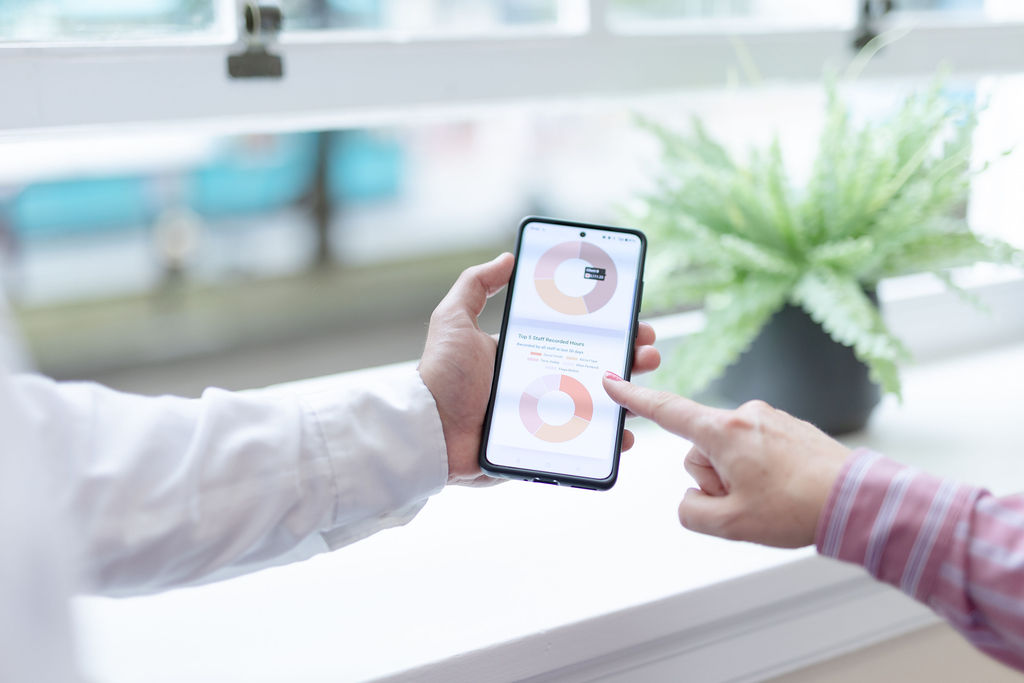Save admin hours, reduce errors, and streamline agency operations with simple timesheet automation
Automating timesheet data collection: where to begin
If you’re a small marketing or PR agency in the UK, manually chasing timesheets is likely eating into your time and profits. Automating this process not only boosts efficiency but also helps reduce admin errors, improves employee time management, and ensures you’re tracking billable hours accurately. Whether you’re managing freelancers or a lean in-house team, automating timesheet data collection makes project and resource planning far easier.
Here’s a step-by-step guide to help you set up and benefit from automated timesheet tracking using a UK timesheet solution.

1. Identify where manual time tracking is holding you back
Start by reviewing your current time tracking process:
- Are you chasing staff for late submissions?
- Are holiday absences disrupting planning?
- Are you often unsure how long projects are really taking?
Pinpointing these pain points will clarify what you need from an intuitive time tracking software.
2. Select a simple timesheet app that supports automation
Look for features that are relevant to small creative teams:
- Auto-reminders to complete timesheets
- Automatic time off tracking
- The ability to repeat recent time entries
- Built-in approval workflows
Choosing a self-serve timesheet platform that comes with UK-based support also ensures you can set up quickly and troubleshoot easily.
3. Set up your software with guided onboarding
Even simple tools can become complex without help. A good provider should:
- Offer a short discovery session to understand your needs
- Configure the software for you based on your workflow
- Provide a walkthrough of features like automated timesheet reminders, project templates, and reporting
Setup shouldn’t take more than a few days—and if it does, the platform might not be right for small teams.
4. Train your team on how to use automation effectively
Your team needs to understand:
- How to track time with minimal effort
- How absence requests flow through the system
- How to view weekly summaries and reports
A short training session is often enough. Ideally, you should have the option to schedule team sessions and admin-specific sessions.
5. Automate leave management and timesheet completion
To reduce planning gaps:
- Allow staff to request sick days or holiday within the system
- Ensure approved leave is auto-added to timesheets
- Send weekly prompts for time entry to reduce chasing
- Configure timesheets to show only relevant tasks (filtering avoids clutter)
This saves hours each month and improves compliance.
6. Use automated reports to improve project visibility
Once timesheet data flows in automatically, start using built-in reporting tools to:
- Check for over-servicing
- Calculate project profitability
- Forecast workloads and resource needs
- Spot inefficiencies in delivery
This insight can help improve pricing, project planning, and client satisfaction.
7. Monitor and adjust your setup as your agency grows
Once automation is in place:
- Review how it’s performing quarterly
- Ask your team for feedback
- Adapt reports and timesheet templates as your client base grows
Automated time tracking is not “set and forget”—it should evolve with your business.
Time-saving tools for creative agencies
Small teams need tools that do more of the heavy lifting—especially when client demands are high, and margins are tight. Automating your timesheet data collection gives you more time to focus on creative work, without sacrificing control over time, cost, and compliance.
If you’re looking for an easy-to-use timesheet software for marketing agencies, Timemarker is a UK timesheet solution built for small teams who want automation without losing the personal support.
Explore our free trial and see how automation can transform your workflow